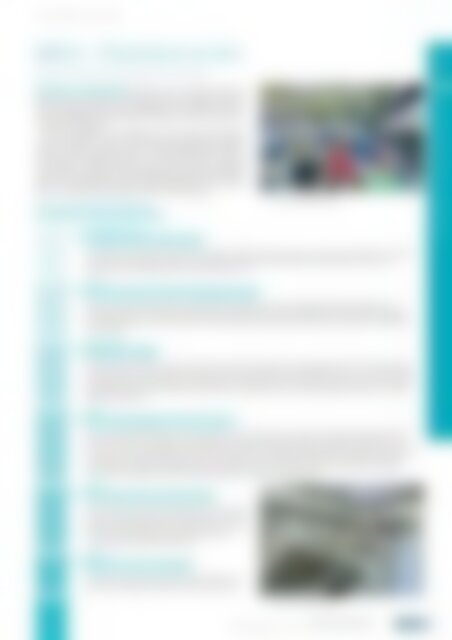atw - International Journal for Nuclear Power | 05.2020
Description Ever since its first issue in 1956, the atw – International Journal for Nuclear Power has been a publisher of specialist articles, background reports, interviews and news about developments and trends from all important sectors of nuclear energy, nuclear technology and the energy industry. Internationally current and competent, the professional journal atw is a valuable source of information. www.nucmag.com
Description
Ever since its first issue in 1956, the atw – International Journal for Nuclear Power has been a publisher of specialist articles, background reports, interviews and news about developments and trends from all important sectors of nuclear energy, nuclear technology and the energy industry. Internationally current and competent, the professional journal atw is a valuable source of information.
www.nucmag.com
You also want an ePaper? Increase the reach of your titles
YUMPU automatically turns print PDFs into web optimized ePapers that Google loves.
<strong>atw</strong> Vol. 65 (2020) | Issue 5 ı May<br />
BER II – The End of an Era<br />
Helmholtz-Zentrum Berlin für Materialien und Energie<br />
46 Years in a Nut Shell December 9, 1973 – the day on which the<br />
BER II went into operation. For almost 50 years he shaped the research.<br />
Over the decades, scientists have repeatedly set new research priorities.<br />
Technical developments and political framework conditions also had an<br />
impact on the operation.<br />
Structural research was established at the <strong>for</strong>mer Hahn Meitner<br />
Institute with BER II. The new research focus had replaced the previous<br />
focus on nuclear chemistry. It got a decisive boost when the BER II<br />
changed its face again significantly in the early 1990s. The conversion<br />
from 5 MW to 10 MW of reactor output made it possible to establish<br />
international user operations and thus develop research with neutrons in<br />
Berlin on a completely new basis. The BER II became the most modern<br />
device in Germany <strong>for</strong> experiments with neutron scattering.<br />
Overview of all major milestones<br />
from research with neutrons at BER II<br />
December 9, 1973<br />
The Beginning with 5 MW of <strong>Power</strong><br />
| View into the experimental hall.<br />
The planning <strong>for</strong> the construction of BER II already began in 1966. The aim was to focus on a new branch of research, the structural<br />
research. This increasingly replaced the nuclear chemistry that had previously characterized the experiments at the reactor.<br />
The operation of the predecessor, BER I, was discontinued in 1971.<br />
259<br />
RESEARCH AND INNOVATION<br />
1981<br />
Start of Cooperation with the Gemäldegalerie Berlin<br />
Discussions with the Rathgen Research Laboratory of the State Museums and the Gemäldegalerie Berlin started and led to a<br />
long-term cooperation. An experiment site <strong>for</strong> neutron activation analysis was set up and between 1984 and 1985 nine paintings<br />
by Rembrandt and his school were examined. Dis covering that the “man with the gold helmet” did not originate from Rembrandt<br />
was sensational.<br />
1986 – 1991<br />
Modification of BER II<br />
The first considerations <strong>for</strong> the conversion were made in 1975; later in 1982 it was an approvable concept. The construction began<br />
four years later. The reactor output was increased to 10 MW and a beryllium reflector was added to the core. This made it possible<br />
to significantly increase the neutron flux. At the same time, a cold neutron source was installed, a pressure vessel in which cryogenic<br />
hydrogen additionally breaks the neutrons. At BER II, slow, so-called cold neutrons could be generated <strong>for</strong> the first time – a great<br />
benefit <strong>for</strong> the research.<br />
1991<br />
Restart and Establishment of User Operation<br />
Due to politically determined delays in the approval process, the restart after the renovation took significantly longer than planned.<br />
However, from 1991 on the upgrade made completely new experiments possible. In addition, new experimental stations were<br />
set up to carry out more experiments at the same time. At the same time, the Working Group „Sample Environment“ was established<br />
to support users in their demanding experiments. The foundation <strong>for</strong> an internationally competitive user company was thus laid.<br />
It was organized in BENSC, the “Berlin Neutron Scattering Center”, which was founded in 1991 as a virtual institute at the HMI.<br />
Within a short time, BENSC had earned an excellent reputation worldwide <strong>for</strong> its user support.<br />
2000<br />
Conversation to low-enriched uranium<br />
At the turn of the century, reactor operations were switched from<br />
high-enriched uranium (HEU) to low-enriched uranium. The fuel<br />
elements were gradually replaced. In March 2000, a reactor core<br />
went into operation, which was operated <strong>for</strong> the first time<br />
completely without highly enriched uranium.<br />
2006<br />
Opening of neutron guide hall II<br />
The neutron guide hall II was built from 2004 to 2006. Among<br />
other things, the high field magnet later found its place here.<br />
| View into the neutron guide hall II.<br />
Research and Innovation<br />
BER II – The End of an Era ı Helmholtz-Zentrum Berlin für Materialien und Energie

















